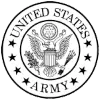Available 24/7
Professional Instruction
Free Training Materials






Course Details
The MOC On-Demand: 20342-Advanced Solutions of Microsoft Exchange Server 2013 course is a 5-day course that is designed to teach students how to configure and manage a Microsoft Exchange Server 2013 messaging environment.
Students will learn how to configure Exchange Server 2013 in this course, and it will provide guidelines, best practices, and considerations that will help you optimize your Exchange Server deployment.
Topics covered in the course include:
- Designing and implementing Exchange Server 2013 Unified Messaging.
- Designing and implementing site resiliency for Exchange Server 2013.
- Planning a virtualization strategy for Exchange Server 2013 roles.
- Designing and implementing message transport security.
- Designing and implementing message retention in Exchange Server 2013.
- Designing and implementing messaging compliance.
- Designing and implementing administrative security in an Exchange Server 2013 environment.
- Using the Windows PowerShell 3.0 command-line interface to manage Exchange Server 2013.
- Designing and implementing integration with Exchange Online.
- Designing and implementing messaging coexistence.
- Designing and implementing Exchange Server migrations from non-Exchange messaging systems, and upgrades from previous Exchange Server versions.
Target Student:This course is designed for Information Technology (IT) professionals who are aspiring to be enterprise-level messaging administrators.
Students should possess the following experience before attending the course:
- Passed 70-341: Core Solutions of Microsoft Exchange Server 2013, or equivalent
- Minimum of two years of experience working with Exchange Server
- Minimum of six months of experience working with Exchange Server 2010 or Exchange Server 2013
- Minimum of two years of experience administering Windows Server, including Windows Server 2008 R2 or Windows Server 2012
- Minimum of two years of experience working with Active Directory
- Minimum of two years of experience working with name resolution, including DNS
- Experience working with certificates, including public key infrastructure (PKI) certificates
- Experience working with Windows PowerShell
Section 1: Overview of Exchange Server 2013 Unified Messaging
This section discusses the core concept of Unified Messaging in Exchange Server 2013.
Topics :
Topic 1: Telephony technologies overview
Topic 2: Unified Messaging in Exchange Server 2013
Topic 3: Unified Messaging components
Lab 1: Unified Messaging Overview
Activity 1: Identifying Unified Messaging components
Section 2: Designing and implementing Exchange Server 2013 Unified Messaging
This section discusses the design and implementation of Exchange Server 2013 Unified Messaging.
Topics :
Topic 1: Designing a Unified Messaging deployment
Topic 2: Deploying and configuring Unified Messaging components
Topic 3: Integrating Exchange Server 2013 Unified Messaging with Lync
Lab 1: Designing and Implementing Exchange Server 2013 Unified Messaging
Activity 1: Designing the Unified Messaging implementation
Activity 2: Configuring Unified Messaging features
Activity 3: Configuring Unified Messaging integration with Lync Server 2013
Section 3: Designing and implementing site resiliency
This section discusses the design and implemetation of site resiliency for Exchange Server 2013.
Topics :
Topic 1: Site resiliency in Exchange Server 2013
Topic 2: Planning a site resilient implementation
Topic 3: Implementing site resiliency
Lab 1: Designing and implementing site resiliency
Activity 1: Designing a site resilient solution
Activity 2: Implementing site resiliency
Activity 3: Validating site resiliency
Section 4: Planning virtualization for Exchange Server 2013
This section discusses to plan a virtualization strategy for Exchange Server 2013 roles.
Topics :
Topic 1: Hyper-V 3.0 overview
Topic 2: Virtualizing Exchange Server 2013 server roles
Lab 1: Planning virtualization of Exchange Server roles
Activity 1: Designing an Exchange Server 2013 deployment for a large organization
Activity 2: Designing an Exchange Server 2013 deployment for a medium organization
Activity 3: Designing an Exchange Server 2013 deployment for a medium complex organization
Section 5: Designing and implementing message transport security
This section discusses the design and implemetation of message transport security.
Topics :
Topic 1: Overview of policy and compliance requirements
Topic 2: Designing and implementing transport compliance
Topic 3: Designing and implementing AD RMS integration with Exchange Server 2013
Lab 1: Designing and implementing message transport security
Activity 1: Planning a message transport implementation
Activity 2: Implementing message transport security
Activity 3: Implementing AD RMS and Exchange Server integration
Section 6: Designing and implementing message retention
This section discusses the design and implemetation of message retention in Exchange Server 2013.
Topics :
Topic 1: Message records management and archiving overview
Topic 2: Designing in-place archiving
Topic 3: Designing and implementing message retention
Lab 1: Designing and implementing message retention
Activity 1: Designing message retention and archiving
Activity 2: Implementing message retention and archiving
Section 7: Designing and implementing messaging compliance
This section discusses the design and implemetation of messaging compliance.
Topics :
Topic 1: Designing and implementing data loss prevention
Topic 2: Designing and implementing an in-place hold
Topic 3: Designing and implementing in-place e-discovery
Lab 1: Designing and implementing messaging compliance
Activity 1: Designing messaging compliance
Activity 2: Implementing data loss prevention
Activity 3: Implementing in-place e-discovery
Activity 4: Comparing messaging policy and compliance options
Section 8: Designing and implementing administrative security and auditing
This section discusses the design and implemetation of administrative security in an Exchange Server 2013 environment.
Topics :
Topic 1: Designing and implementing role based access control
Topic 2: Designing and implementing split permissions
Topic 3: Planning and implementing audit logging
Lab 1: Designing and implementing administrative security and auditing
Activity 1: Designing a solution to fulfill requirements
Activity 2: Implementing role based access control
Activity 3: Implementing mailbox access and administrative logging
Activity 4: Implementing and testing split permissions
Section 9: Managing Exchange Server 2013 with Exchange Management Shell
This section discusses using Windows PowerShell 3.0 to manage Exchange Server 2013.
Topics :
Topic 1: Overview of Windows PowerShell 3.0
Topic 2: Using Exchange Management Shell to manage Exchange Server recipients
Topic 3: Managing Exchange Server 2013 with Exchange Management Shell
Lab 1: Managing Exchange Server 2013 with Exchange Management Shell
Activity 1: Exploring Exchange Management Shell
Activity 2: Using Exchange Management Shell to manage recipients
Section 10: Designing and implementing integration with Exchange Online
This section discusses the design and implemetation of integration with Exchange Online.
Topics :
Topic 1: Planning for Exchange Online
Topic 2: Planning and implementing the migration to Exchange Online
Topic 3: Planning coexistence with Exchange Online
Lab 1: Designing integration with Exchange Online
Activity 1: Designing integration with Exchange Online
Activity 2: Implementing integration with Exchange Online
Section 11: Designing and implementing messaging coexistence
This section discusses the design and implemetation of messaging coexistence.
Topics :
Topic 1: Designing and implementing federation
Topic 2: Designing coexistence between Exchange organizations
Topic 3: Designing and implementing cross-forest mailbox moves
Lab 1: Implementing messaging coexistence
Activity 1: Implementing Message Routing Coexistence
Activity 2: Migrating user mailboxes
Activity 3: Configuring administrative coexistence
Section 12: Designing and implementing Exchange Server migrations and upgrades
This section discusses the design and implemetation of Exchange Server migrations from non-Exchange messaging systems, and upgrades from previous Exchange Server versions.
Topics :
Topic 1: Designing migration from non-Exchange email systems
Topic 2: Planning the upgrade from previous Exchange versions
Topic 3: Implementing the migration from previous Exchange versions
Lab 1: Designing and implementing Exchange Server migrations
Activity 1: Planning the migration strategy
Activity 2: Deploying Exchange Server 2013 in an Exchange Server 2007 organization
Activity 3: Migrating all messaging components to Exchange Server 2013
Activity 4: Removing the Exchange Server 2007 server
Please check the course description to find prerequisite information.
MOC On-Demand: 20342-Advanced Solutions of Microsoft Exchange Server 2013
On-Demand Training Course
90/month licence
- 24/7 Access
- Hands-On Practice Exercises
- Free Repeats
- Professional Instruction
Testimonials
This was the class I needed.
The instructor Jeff took his time and made sure we understood each topic before moving to the next. He answered all of our questions, and I don't know about the rest of the students, but was very pleased with this experience.
I finally understand how to use Excel.
-Amanda T (Yale New Haven Hospital).
Great class!
We were able to cover a lot of information in one day without getting overwhelmed.
-Maria R (Microsoft).
Free Repeats
Learn At Your Pace
No Travel
Professional Instruction
Affordable Pricing
Group Discounts

